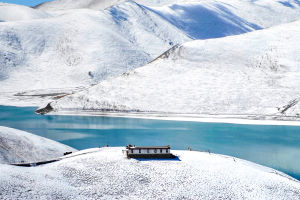Wetlands are not only rich in natural resources but also provide significant environmental regulation and ecological benefits.
Various types of wetlands play crucial roles in providing water resources, regulating climate, filtering and nourishing water, mitigating floods, promoting siltation and land formation, breaking down pollutants, protecting biodiversity, and providing products and living resources for humans.
Biodiversity in wetlands holds a critical position. Wetlands are home to abundant wildlife and plants that rely on them for survival and reproduction, including many rare and endemic species. They are vital areas for rich biodiversity and habitats for endangered and migratory birds and other wild animals.
Around half of the national-level protected bird species in China live in wetlands. China has one of the richest wetland biodiversity in the world, with 31 of the 57 endangered bird species in Asia found in Chinese wetlands. Moreover, Chinese wetlands are home to nine out of the 15 crane species in the world.
To protect wetlands and birds, birdwatching houses are built. These structures are designed based on the habits of birds, constructed with imitation wood structures, and equipped with binoculars and other birdwatching equipment. They provide a protective space for birds and a site for people to observe their behavior.
Tij Bird House is one of the most well-known birdwatching houses in the world. "Tij" means "tide," referring to the tidal water level changes in the Haringvliet waterway. When read quickly, it also means "egg." The sluice gate opening is intended to improve water quality, enhance biodiversity, and promote fish migration from the Dutch North Sea to the delta of the Maas and Rhine.
This initiative will create a new salt-tolerant and salt-loving environment, gradually increasing the biodiversity of the surrounding nature reserves and creating a more robust ecosystem in the coming years. To encourage people to experience and explore these changes, a series of new bird observatories have been built in the Haring Waterway area.
Tij Bird House is located in the Scheelhoek Nature Reserve near the Haring Waterway. The reserve's coastal defenses are lined with massive reed beds on the inside and several flat, sandy islands on the outside, providing breeding and feeding habitat for various bird species, such as Common Terns and Great Herons, including the iconic local White-billed-end Crested Tern.
The Tij Birding House is part of a larger landscape plan that enables visitors to walk from the parking lot and experience the Scheelhoek District Nature Reserve. Along the trail, visitors can observe the living quarters of several bird species, with sandpipers, wading birds, and terns all enjoying the area.
To minimize disturbance to the birds, the final section of the trail is designed as a tunnel, constructed of reused bollards and red iron planks once used in the brick-making industry.
The inner surface of the tunnel is covered with sand to provide a habitat for terns or wading birds, while the outer surface provides a nesting cavity for Cliff Sandpipers. The "eggs" are located at the end of the route, from where you can observe the incubating terns and various species living in and around the water.


